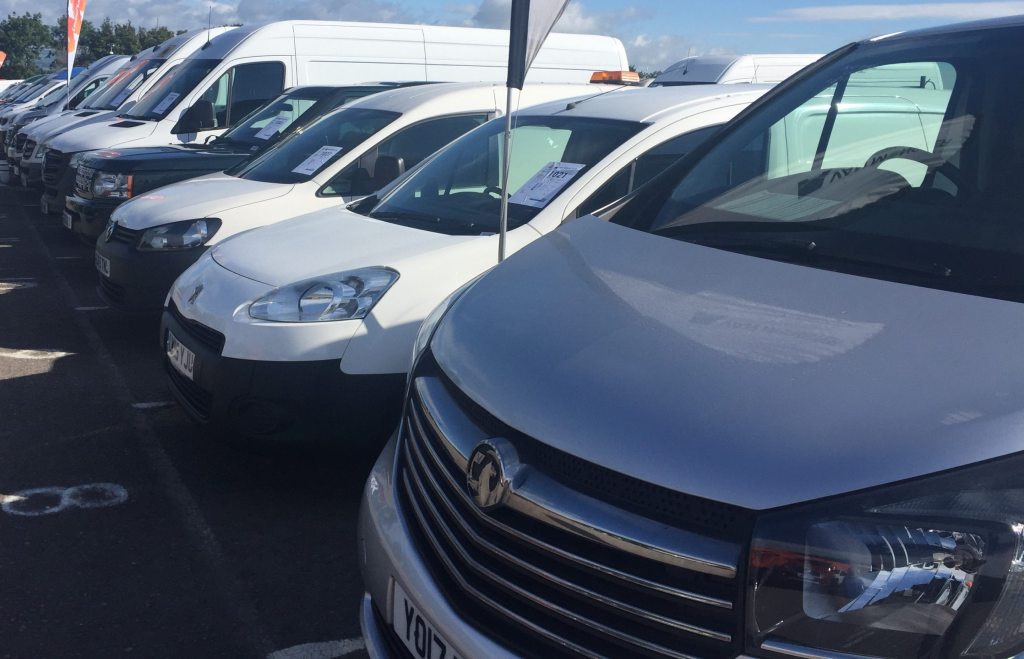Each month auction houses send the same message: ready to retail vans find eager buyers willing to pay premium prices while those in poor condition struggle to sell. The majority of light commercial vehicles (LCVs) are not refurbished, but ‘sold as seen’ with many requiring significant refurbishment prior to sale.
The majority of buyers at auction are traders. They are experts at moving vehicles quickly to new owners. They supplement their price knowledge using Glass’s values, adjusting these values to take account of vehicle age, mileage and condition. They know exactly how much each damage repair costs. If there is too much damage, they bid low to cover the cost of the repairs. However, as vehicles age, not all dents and nicks are cost effective to repair.
Maximising resale price
Fleet managers can take specific actions to guarantee the best prices for vehicles in the wholesale market. Vehicle presentation coupled to the availability of all documents and keys is vital to achieving this.
The initial life of an LCV is usually determined by operational requirements. Effectively the fleet manager asks whether the vehicle is fit for purpose. This requirement is closely followed by:
- Low vehicle price
- Manufacturer support
- Vehicle warranty
- Dealer network coverage
In the LCV market, vehicle choice is usually taken by a fleet manager who will not be getting behind the wheel. Driven by budgets, the vehicle selection is often based on initial cost rather than specific thoughts on how the vehicle could be remarketed.
Second life
Taking into account the second life of a vehicle could significantly benefit residual values (RV). Here the fleet manager can carefully consider different trim levels that offer additional safety and comfort features that may maintain the look of the vehicle. Not only can they offer a greater duty of care to drivers, they can also strengthen RVs. At the same time, there is the potential of reducing monthly rental payments if the vehicle is purchased on contract hire.
Higher trim levels, such as the Citroen Berlingo Enterprise, Peugeot Partner Professional, Ford Transit Custom Limited and Volkswagen Transporter Highline are more desirable to second hand buyers. Of course, ensuring they arrive in the second hand market with as little damage as possible will help it sell for a better price.
Planning to boost second hand values by opting for higher trim levels with specific options can pay dividends. The following list includes some features that can add to a vehicle’s desirability in the used market.
- Comfort features promoting a relaxed driving environment
- Bluetooth (now offered by most manufacturers as a standard feature)
- Air conditioning
- Heated seats
- Automatic gearbox
- Additional seats
- Damage limitation features
- Rear parking sensors
- Ply-lining
- Exterior style
- Metallic paint
Previously, a satellite navigation system would have been in this list, however, with changes in technology, most drivers prefer to use a smart phone navigation app. That said, the older the vehicle is and the more miles it has covered, the less desirable these added extras are. Specification becomes less of a concern and condition becomes vitally important.
White van versus metallic van
White vans are still the most common in the used market and the easiest to repair. Metallic paint is growing in popularity and often sells at a premium if the vehicle is in good condition. However, metallic paint has a downside; depreciation is faster if the bodywork is damaged. Panels can be expensive to repair, often with the need of a paint oven to match the colour properly over multiple panels. The older the van is, the more difficult it is to match the original faded colour correctly.

Selecting higher horsepower vans can also deliver strong used performance, especially when these are selected as a small proportion of a fleet. Vans with larger horse power offer used van buyers something different. However, fleet managers should balance this against likely higher fuel consumption and higher initial purchase price.
Small vans with a third seat or medium sized vans with a second row of seats are extremely popular for customers who want to use vehicles for personal and business travel. These can make premiums over the standard vans if offered combined with features such as air conditioning and metallic paint.
On medium sized vans, tailgates, instead of standard twin rear doors that are paired with an automatic gearbox can gain desirability and stronger RVs for buyers considering converting to camper vans.
Age, condition and service
As vehicles age, vehicle condition plays an increasingly important part in the RV. Damage and excessive wear and tear due to driver misuse can significantly affect RVs. To minimise this, fleet managers should monitor the vehicles whilst in service through telematics systems. These systems appear to ensure driver behaviour is corrected using driver incentive schemes to reward driver performance.
Lastly, a full service history (FSH) is highly important in the used market. The ability to provide a detailed rundown of all maintenance work undertaken throughout a vehicles life and confirm it has received all of its necessary service checks to either address problems or prevent them, gives prospective buyers confidence in the product and sellers, an additional bargaining chip. Vehicles with a FSH can be worth upwards of £500 more than vehicles without.

Summary
Planning a fleet is not an easy task. However, just minor considerations in how vehicles could be used in a second life will increase RVs significantly. Additionally, through the life of the vehicle, ensuring drivers maintain and reduce vehicle damage will deliver vehicles at the time of remarketing requiring only small amounts of refurbishment. Supplying your LCVs in a ready to retail condition to the wholesale market will find eager buyers willing to pay premium prices.

 Close
Close